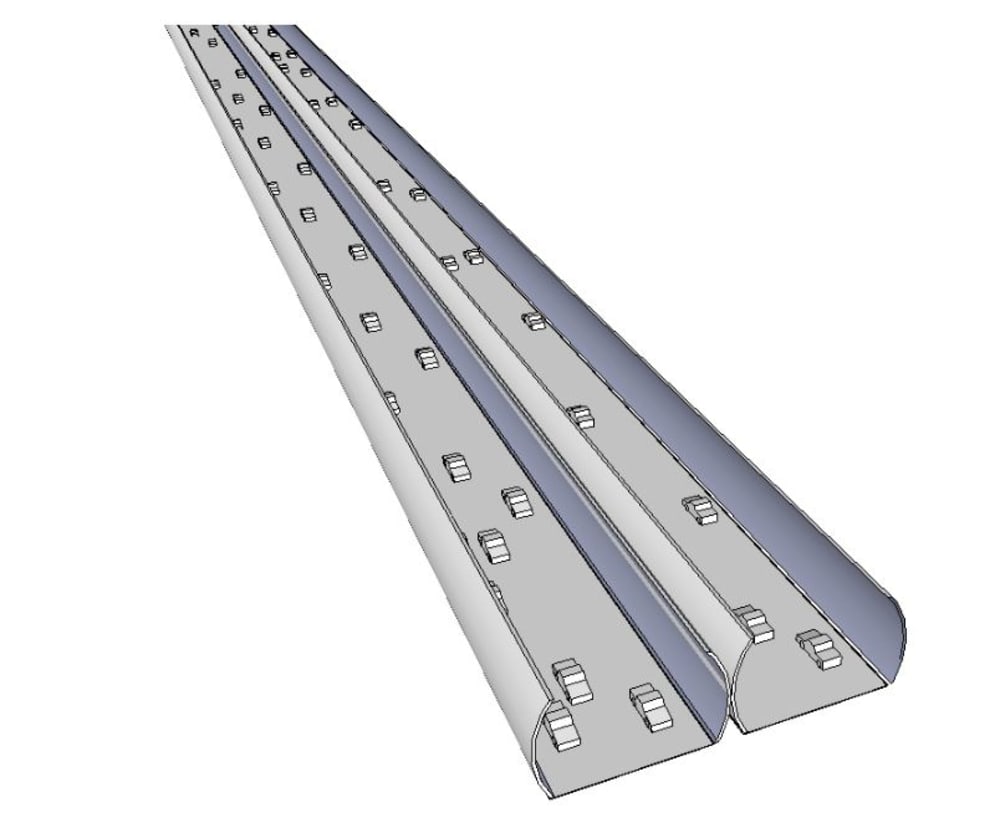At highway speeds, a large amount of energy is used to overcome aerodynamic drag. I believe we can make changes to our highways that can reduce that drag.
Currently one way to reduce drag is to drive slower. The force of aerodynamic drag goes up with the square of the vehicle’s speed, so driving slower reduces the drag. According to the US Environmental Protection Agency, reducing the speed of trucks from 65 miles/hour to 60 miles per hour will reduce fuel consumption by 7%. (Not all that savings is from aerodynamic drag.)
An equivalent way to reduce drag is to drive with the wind. A vehicle will use less fuel driving with the wind than against the wind since drag is a function of air speed and not ground speed.
I propose that we modify highways so the cars create wind in the direction of travel. This will allow cars following them to drive with the wind. Currently as cars travel down the highway, they push air out of the way, and the energy used to do that is wasted. If we modify the highways by adding tunnels or semi-tunnels as shown in the illustration, the air being pushed out of the way will instead be constrained and pushed forward—thus creating the wind. So instead creating wind that blows trees and bushes along the highway, the wind will be used to help the next car save fuel.
A 5 or 10 mph wind will make a big difference in fuel economy.
Research is needed to figure out many of the details. Simulations will be key to optimizing the design to keep costs manageable and to maximize the energy savings. There are a lot of highway miles, and even the tiniest improvements will get multiplied by each mile.
• What is the best tunnel shape to generate the wind? Is it a complete tunnel or a semi-tunnel? How big of a tunnel? What shape?
• Would we save more energy with enclosed tunnels even if we have to ventilate and provide lighting, or are we better off with partial tunnels?
• What are the tunnel walls made of? How are they constructed and installed so they can withstand wind, traffic accidents, etc. while still keeping costs down?
• How should the traffic signs be shaped so they are aerodynamic without costing too much?
• Which highways will benefit most from this? Wide highways? Narrow highways?
• What’s the optimum amount of traffic? How will the benefits vary throughout the day as the traffic levels change?
• Will this work in windy areas?
• Would our strategy change in areas where winds normally blow in one direction more than others?
I believe this research can best be handled by the many governmental highway research organizations. I am not seeking funding to do the research.
Like this entry?
-
About the Entrant
- Name:Jim Jaskol
- Type of entry:individual
- Software used for this entry:SketchUp for the Concept Drawing. Tools like COMSOL will be needed to prove out the design and refine it.
- Patent status:none

